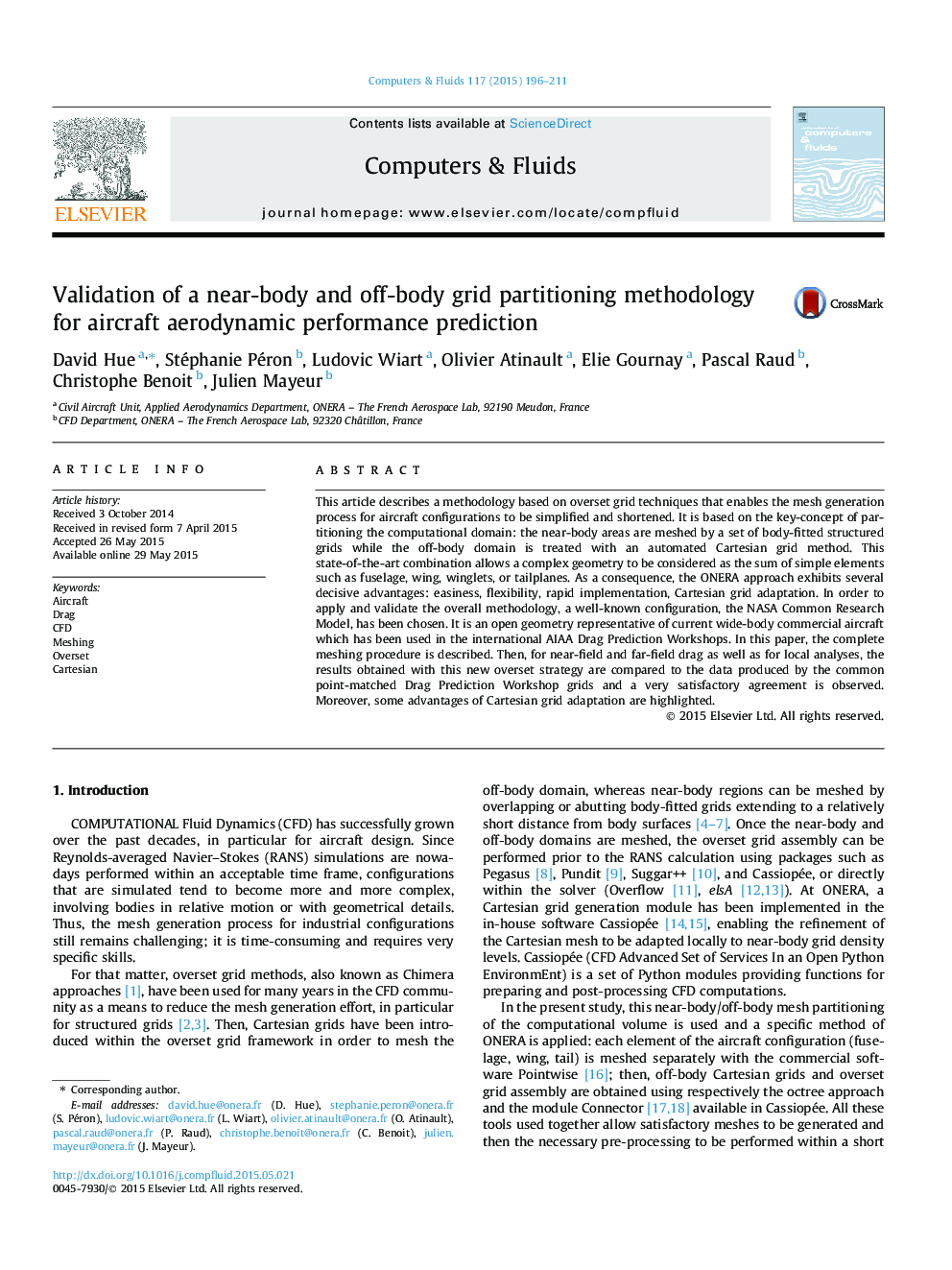| کد مقاله | کد نشریه | سال انتشار | مقاله انگلیسی | نسخه تمام متن |
|---|---|---|---|---|
| 761655 | 1462693 | 2015 | 16 صفحه PDF | دانلود رایگان |
• The paper focuses on aerodynamic studies for aircraft configurations.
• We present a methodology that enables to shorten the CFD mesh generation process.
• It is based on overset and octree Cartesian approaches combined together.
• The advantages are: easiness, flexibility, rapid implementation, grid adaptation.
• The agreement obtained with well-known and reliable DPW data is satisfactory.
This article describes a methodology based on overset grid techniques that enables the mesh generation process for aircraft configurations to be simplified and shortened. It is based on the key-concept of partitioning the computational domain: the near-body areas are meshed by a set of body-fitted structured grids while the off-body domain is treated with an automated Cartesian grid method. This state-of-the-art combination allows a complex geometry to be considered as the sum of simple elements such as fuselage, wing, winglets, or tailplanes. As a consequence, the ONERA approach exhibits several decisive advantages: easiness, flexibility, rapid implementation, Cartesian grid adaptation. In order to apply and validate the overall methodology, a well-known configuration, the NASA Common Research Model, has been chosen. It is an open geometry representative of current wide-body commercial aircraft which has been used in the international AIAA Drag Prediction Workshops. In this paper, the complete meshing procedure is described. Then, for near-field and far-field drag as well as for local analyses, the results obtained with this new overset strategy are compared to the data produced by the common point-matched Drag Prediction Workshop grids and a very satisfactory agreement is observed. Moreover, some advantages of Cartesian grid adaptation are highlighted.
Journal: Computers & Fluids - Volume 117, 31 August 2015, Pages 196–211
